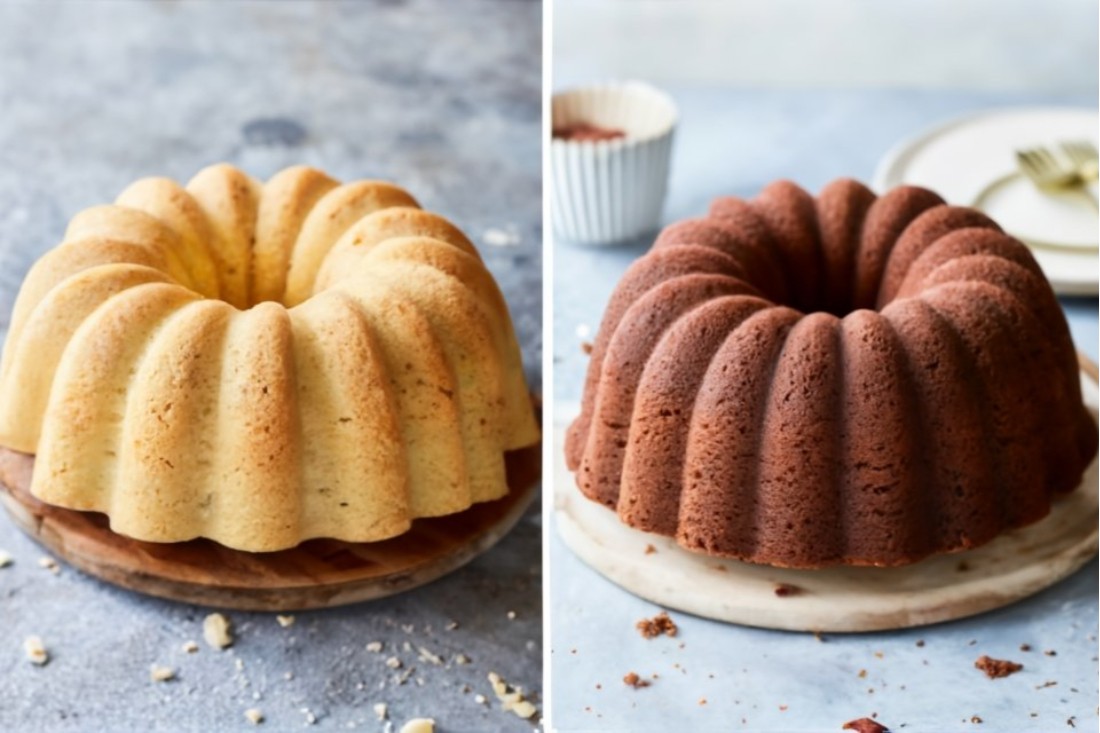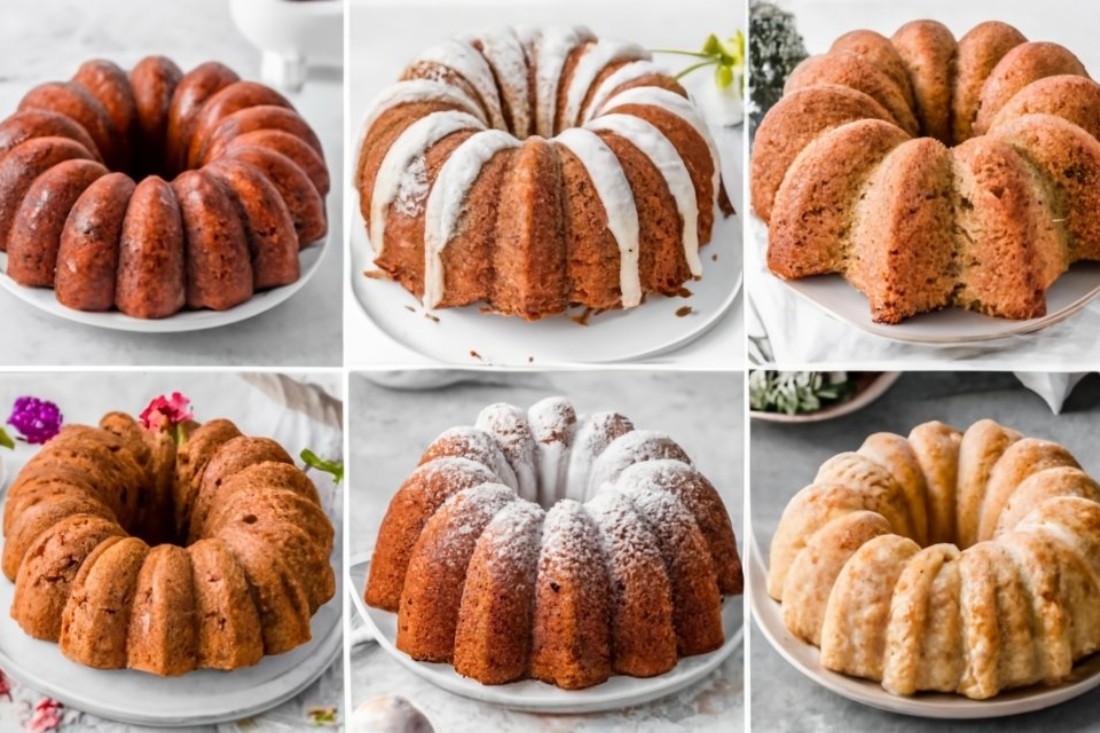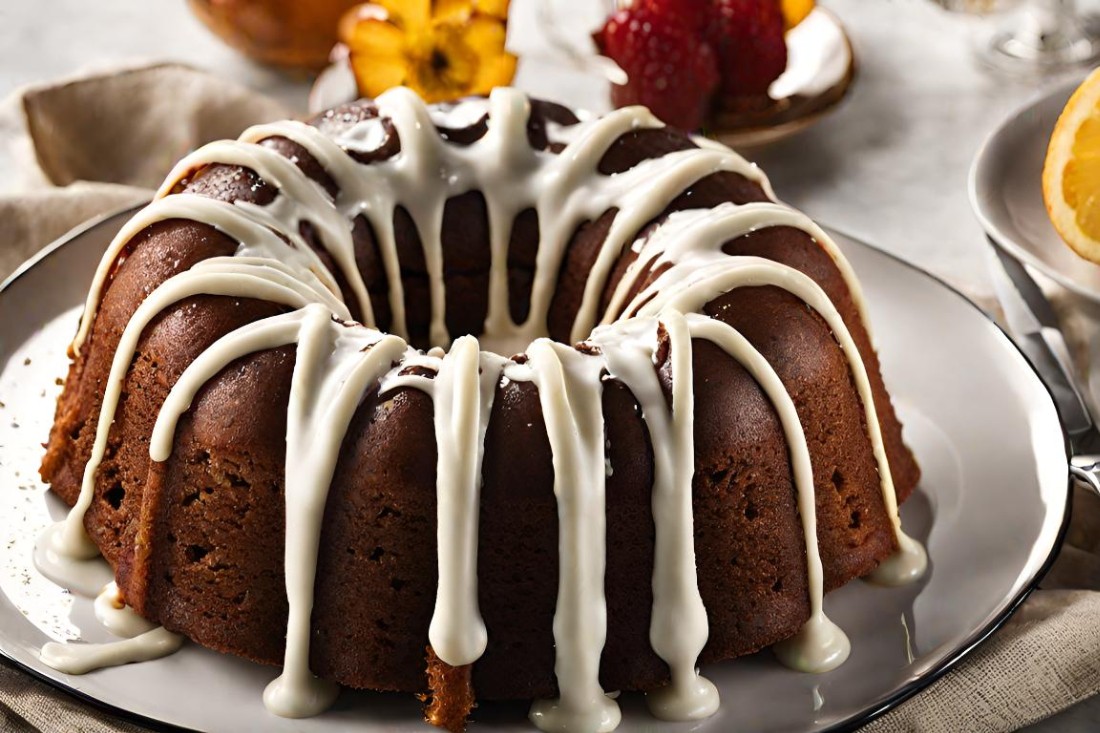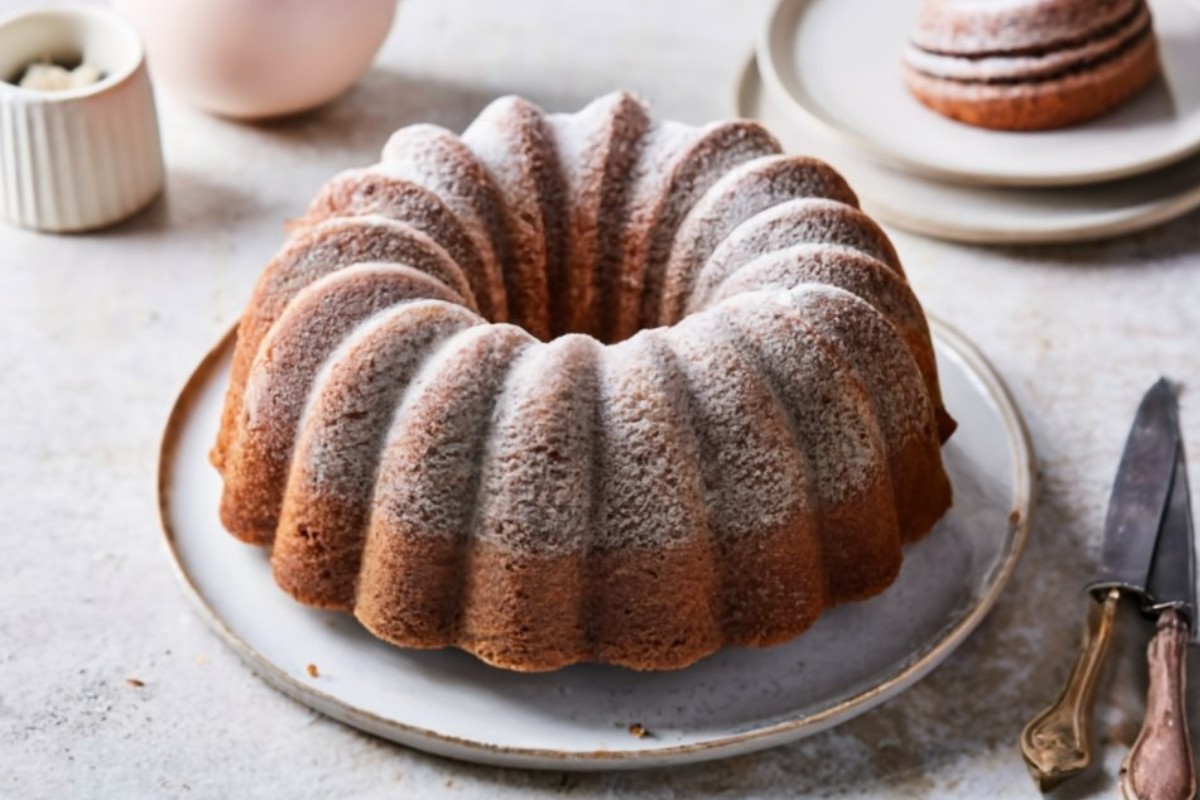In the enchanting world of baking, a frequently asked question arises: “Why is a bundt cake better than a regular cake?” This article delves into the heart of this query, exploring the unique characteristics and advantages that set bundt cakes apart from their regular counterparts. From their distinctive design to the science behind their baking, we uncover the reasons behind the growing preference for bundt cakes in kitchens around the globe.
Understanding Bundt Cakes
What Makes Bundt Cakes Unique?
Bundt cakes, with their distinctive ring shape and ornate designs, are more than just a treat for the taste buds; they’re a feast for the eyes! The bundt pan, the cake’s namesake, is the secret behind this unique form. Unlike regular cake pans, bundt pans come in various shapes and sizes, each offering a different artistic flair to the cake. From elegant swirls to intricate floral patterns, these pans turn a simple cake into a work of art.
But it’s not all about looks. The central tube of a bundt pan ensures that heat circulates evenly throughout the cake. This design is a game-changer, especially for denser, moister cakes. It means no more undercooked centers or overcooked edges – just perfectly baked goodness every time.
The History and Popularity of Bundt Cakes
The bundt cake’s journey to popularity is as fascinating as its design. Originating from European bakes like the German Gugelhupf, the
bundt cake truly rose to fame in the United States in the mid-20th century. Thanks to a baking contest in 1966, where a bundt cake nearly won the grand prize, these pans and their cakes skyrocketed in popularity. Today, they’re a staple in American baking culture, celebrated for their versatility and the nostalgic charm they bring to the table.
Bundt cakes have evolved over the years, with bakers experimenting with a plethora of flavors and ingredients. From the classic lemon or chocolate bundt to more adventurous combinations like pumpkin spice or mocha-almond, there’s a bundt cake for every palate. This versatility has only fueled their popularity, making them a beloved choice for gatherings, holidays, and cozy afternoons at home.
In essence, bundt cakes are more than just a dessert. They’re a symbol of creativity and tradition in the baking world, offering a perfect blend of form, flavor, and history. Whether you’re a seasoned baker or a curious newbie, diving into the world of bundt cakes is sure to add a twist of fun and elegance to your baking adventures.
Comparing Bundt and Regular Cakes

Key Differences Between Bundt and Regular Cakes
When it comes to distinguishing bundt cakes from regular cakes, several key factors come into play. The most obvious difference lies in their design and aesthetics. Bundt cakes, known for their signature hole in the middle, boast intricate patterns that regular cakes, typically round or square, can’t replicate. This unique design isn’t just for show; it influences the cake’s overall texture and cooking process.
Speaking of texture, bundt cakes often have a denser and moister consistency compared to regular cakes. This is due to the bundt pan’s design, which allows for more even heat distribution during baking. Regular cakes, on the other hand, might struggle with uneven cooking, especially if they’re particularly thick or moist.
The flavor and ingredient distribution in bundt cakes also sets them apart. The pan’s design ensures that ingredients like fruits, nuts, or chocolate chips are evenly dispersed throughout the cake. In regular cakes, these add-ins can sink to the bottom or become unevenly distributed, affecting the overall taste and texture.
Design and Aesthetics
The aesthetic appeal of bundt cakes is undeniable. With their elegant curves and peaks, they require minimal decoration to look stunning. Regular cakes, while versatile in shape, often rely on frosting and other decorations for visual appeal. Bundt cakes, with their built-in designs, offer a sophisticated look with far less effort.
Texture and Moisture Content
The texture of a bundt cake is one of its most celebrated features. The even heat distribution provided by the bundt pan’s central tube means that these cakes are consistently cooked throughout. This results in a perfectly balanced texture – moist yet firm. Regular cakes, baked in flat pans, can sometimes suffer from dry edges or undercooked centers, especially if the batter is particularly dense or moist.
Flavor and Ingredient Distribution
Finally, the distribution of flavors and ingredients in bundt cakes is typically more uniform than in regular cakes. The pan’s design encourages an even spread of add-ins, ensuring that each slice is as flavorful as the last. In contrast, regular cakes can have pockets of flavor based on how the ingredients settle during the baking process.
In summary, while both bundt and regular cakes have their unique charms, the bundt cake stands out for its distinctive design, even cooking, and consistent texture and flavor. These qualities make it a beloved choice for bakers and dessert enthusiasts alike.
The Science Behind Bundt Cake Baking
Why Bundt Cakes Bake Better
The secret to the perfection of bundt cakes lies in the science of their baking. Understanding the heat distribution and cooking efficiency of bundt pans reveals why these cakes often turn out better than their regular counterparts.
Heat Distribution and Cooking Efficiency
The central tube of a bundt pan is a game-changer in baking dynamics. It allows heat to circulate through the center of the cake, ensuring a uniform bake. This means the edges and the center of the cake receive heat more evenly, eliminating the common baking woes of undercooked middles or overdone edges. Regular cake pans, lacking this central heat distribution feature, can struggle to bake evenly, especially with denser, moister cake batters.
The material of the bundt pan also plays a crucial role. Most bundt pans are made of metals that conduct heat efficiently, further aiding in even baking. This efficient heat conduction ensures that the cake rises uniformly, giving it a perfect texture and consistency.
The Role of the Bundt Pan in Even Baking
The design of the bundt pan isn’t just for aesthetic purposes; it’s a vital factor in how the cake bakes. The intricate grooves and designs of the pan create more surface area, allowing the cake to form a firm crust. This crust is not only delicious but also helps the cake maintain its shape and structure, preventing it from collapsing or becoming too dense.
Moreover, the non-stick coatings often found on bundt pans aid in even baking and easy release of the cake. This means less struggle with sticking and crumbling, common issues in regular cake pans, especially when dealing with moister cake batters.
In essence, the bundt pan is a marvel of baking science, ingeniously designed to overcome common baking challenges. Its ability to distribute heat evenly and efficiently makes it a superior choice for baking cakes that are not only beautiful but also perfectly cooked every time.
Versatility and Creativity

Exploring the Versatility of Bundt Cakes
Bundt cakes are celebrated not just for their distinctive looks and perfect texture, but also for their incredible versatility. This section delves into how bundt cakes can adapt to various recipes and the creative possibilities they offer.
Adapting Recipes for Bundt Cake Pans
One of the joys of baking bundt cakes is the ease with which you can adapt a wide range of recipes to fit the bundt mold. Whether it’s a rich chocolate cake, a fruity lemon drizzle, or a classic pound cake, the bundt pan can handle it all. The key is to adjust baking times and temperatures accordingly, as the bundt pan’s unique shape can affect how quickly and evenly the cake cooks.
Moreover, bundt cakes are not just limited to sweet recipes. Savory options like cheese-filled breakfast cakes or herbed bread can also be baked in a bundt pan, offering a delightful twist to traditional recipes.
Decorative Possibilities with Bundt Cakes
The aesthetic appeal of bundt cakes opens up a world of decorative possibilities. The intricate designs of the pans create cakes that are visually stunning on their own, often requiring little to no additional decoration. A simple glaze or dusting of powdered sugar can be enough to enhance their elegance.
For those who love to get creative, bundt cakes can be the canvas for a variety of decorations. Drizzles of icing, fresh fruits, edible flowers, or themed toppers can add a personal touch to these cakes, making them not just a dessert but a centerpiece for any occasion.
In summary, the versatility and creativity afforded by bundt cakes make them a favorite among bakers. Whether sticking to traditional recipes or experimenting with new flavors and decorations, bundt cakes offer endless possibilities to express culinary creativity.
Practical Considerations

Practical Benefits of Choosing Bundt Over Regular Cakes
While the aesthetics and versatility of bundt cakes are often celebrated, their practical benefits are equally noteworthy. This section explores the ease of baking, serving, and storing bundt cakes, highlighting why they can be a more practical choice compared to regular cakes.
Ease of Baking and Serving
Bundt cakes are known for their simplicity and convenience in baking. The design of the bundt pan, with its even heat distribution, reduces the likelihood of common baking mishaps, making the process more foolproof. This is particularly beneficial for novice bakers or those who want to enjoy baking without the stress of unevenly cooked cakes.
When it comes to serving, bundt cakes offer a hassle-free experience. Their inherent decorative design means there’s often no need for elaborate frosting or layering. A simple slice of a bundt cake presents beautifully on a plate, making serving a breeze, especially for larger gatherings.
Storage and Longevity of Bundt Cakes
Another practical advantage of bundt cakes is their storage and longevity. Due to their dense and moist nature, bundt cakes tend to stay fresh longer than many regular cakes. They can be easily stored at room temperature for several days without losing their flavor or texture.
Moreover, bundt cakes are less prone to drying out, thanks to their shape and the even distribution of ingredients. This makes them ideal for preparing in advance, whether for a weekend treat or a special occasion.
In conclusion, the practical benefits of bundt cakes – from their ease of baking and serving to their storage and longevity – make them a smart choice for both everyday bakers and those preparing for special events. With their combination of beauty, versatility, and practicality, bundt cakes truly stand out in the world of baking.
FAQs
Frequently Asked Questions About Bundt Cakes
In this section, we address some of the most common queries about bundt cakes. These FAQs not only provide valuable insights for both novice and experienced bakers but also highlight the unique aspects of bundt cake baking.
- Can any cake recipe be adapted for a bundt pan?
- Most cake recipes can be adapted for a bundt pan, but adjustments in baking time and temperature may be necessary. Dense and moist cake batters work particularly well in bundt pans.
- How do I prevent my bundt cake from sticking to the pan?
- Proper greasing and flouring of the pan are crucial. Some bakers prefer using baking spray with flour for an even coat. Ensure the pan is thoroughly coated, paying extra attention to the crevices.
- Why does my bundt cake have a crusty outside but is undercooked inside?
- This often occurs due to high oven temperature. Try lowering the temperature and baking for a longer time to allow the cake to cook through without burning the outside.
- Can bundt cakes be made in advance?
- Yes, bundt cakes are ideal for making ahead. Their dense texture keeps them moist, and they often taste better a day after baking as the flavors meld together.
- How do I add a glaze or frosting to a bundt cake?
- Pour or drizzle glazes over the cooled cake. For thicker frostings, use a piping bag or spoon to add decorative touches along the grooves and crests of the cake.
- Are bundt cakes suitable for special diets, like gluten-free or vegan?
- Absolutely! There are many recipes for gluten-free and vegan bundt cakes. Just ensure the ingredients are compatible with the dietary requirements.
Addressing these FAQs not only helps in troubleshooting common issues but also enhances the overall bundt cake-baking experience, ensuring delicious results every time.
Conclusion
In summing up the bundt cake experience, it’s clear that these delightful desserts offer more than just a sweet treat. They embody a unique blend of artistry, science, and practicality that sets them apart in the baking world. From their intricate designs and even baking to their versatility and ease of serving, bundt cakes hold a special place in the hearts of bakers and dessert lovers alike.
Whether you’re a seasoned baker or just starting, the world of bundt cakes offers endless possibilities to explore your culinary creativity. With their ability to adapt to various flavors and occasions, bundt cakes are not just a dessert; they’re a celebration of baking itself. So, the next time you’re pondering over what cake to bake, remember the charm and versatility of the bundt cake – a simple choice that can elevate your baking to new heights of deliciousness and beauty.

